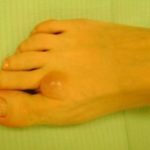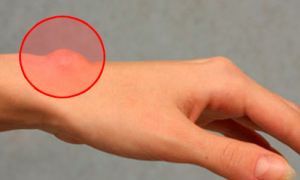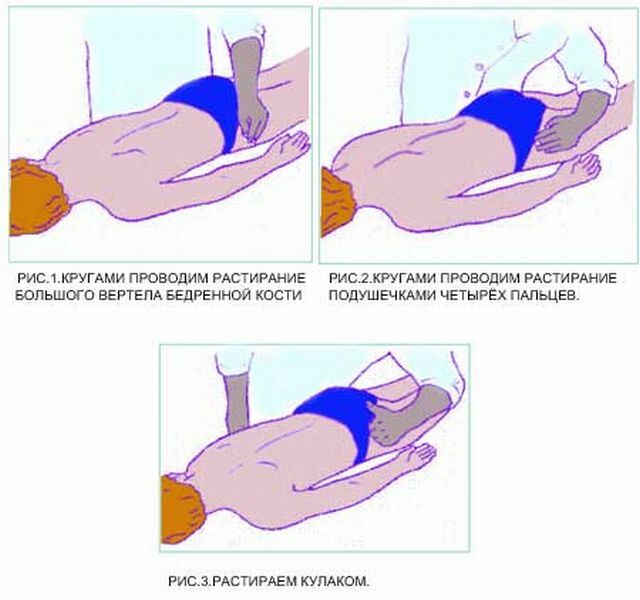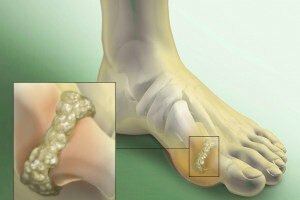What is a hygroma brush? This is a benign tumor that forms in the area of the joint of the hand, due to the filling of the fluid tissues located near the tendons.
The cause of the appearance, can be trauma and professional activity, associated with a constant monotonous load on the same muscles.
The risk group for the emergence of hygroma on the hand includes: athletes( tennis players playing golf and badminton), programmers, tailors, etc.
Contents of the article
- What are the types of gigrom brushes?
- Reasons for the appearance of a tumor
- Diagnosis of the disease
- Methods for treating a pathology
- Blockade with a glucocorticoid
- Crushing
- Surgical removal
- Laser removal
- Complications or relapses
- Preventative measures
- Video: Hygroma function of a brush
What are the types of brush hygroma?
Externally, the hygroma resembles small dimensions( 2-3 cm), a painless swelling that does not interfere with the movement of the hand. Feelings are not pleasant, they can arise only with a high load on the brush or when it is bent.
There are different types of education on the brush:
- Hygroma wrist joint - formed on the surface of the brush from the back;
- Hygroma of the palm - the formation is localized on the palm itself or from the side where the radial artery is located. This arrangement makes it difficult to treat with surgery;
- The hygroma of the finger is not a beautiful, painful formation, which gives a lot of inconvenience to a person.
Theoretically, cystic formation can develop in any part of the body where connective tissue is only located, but practice has shown that it mainly appears in the distal parts of the limbs.
By prevalence in the first place is listed, the hygroma of the back of the wrist joint.
It is much less common to find education on the fingers, the hand, the palmar surface and in the foot area of the ankle joint.
 Does hygroma require foot care, which is fundamentally different from other species by gigram? Is effective prevention of hygroma possible? You will find answers to these questions in our article.
Does hygroma require foot care, which is fundamentally different from other species by gigram? Is effective prevention of hygroma possible? You will find answers to these questions in our article.
If you have long wanted to learn how to cure osteochondrosis of the lumbar region forever, then you should get acquainted with our material.
Reasons for the appearance of a tumor
The appearance of a tumor naturally starts by a number of circumstances. Like many other diseases, the hygroma on the hand is a group of ailments whose causes can not be established exactly.
Among the more frequent factors that lead to the development of hygroma of the hand, the following can be distinguished:
- a hereditary predisposition of , which is associated with weakening of the joint apparatus;
- hand injuries of any kind from sprains to fractures;
- is a joint disease or inflammation of the , as well as those located near the organs;
- similar actions by hands ( sewing, embroidering, typing on the computer texts, playing some musical instruments);
- degenerative joint diseases .
In addition to all the above, the hygroma can appear as consequences of the operation, but such cases are rare.
Diagnosis of the disease
In the presence of this education, it is not difficult to diagnose - similar symptoms can give little, what disease. Therefore, is often simple enough to be examined by a doctor.
To do this, use the following methods:
- ultrasound, for the location of the tumor;
- X-ray , is indicated for the exclusion of malignant formations or abscesses;
- MRI is prescribed in severe cases.
Additional measures of diagnosis is a method to determine the features of the structure of the hand and to identify where the hygroma originated, the factors that caused the disease for the first time, are capable of provoking the re-formation of the tumor.
Methods of treating pathology

The photos show the dissected hygroma of the brush
Treatment of the hygroma of the hand can be both surgical and conservative. The benefits and relative risks of any of the treatments should be preliminarily, carefully analyzed.
Conservative treatment is carried out in 2 ways: by crushing and blockade of glucocorticoids.
Blockade with glucocorticoid
This method is quite effective, but is only shown in the early stages of the development of the disease, the code formation has grown to 1 cm, but no more.
Procedure:
Procedure begins with local anesthesia. Next, the formation is punctured and its contents are removed using a syringe.
Do not remove the needle, change the syringe and inject the glucocorticoid drug. On the wrist apply a pressure bandage and orthosis, which is left for 5 weeks. During this time, the devastated edges of the hygroma have the ability to adhere and fuse.
If it is not worn after the procedure, then during the movement of the brush, intraarticular fluid will be provoked, the pressure of which can not be resisted by a weak internal scar. This can contribute to the recurrence of the hygroma.
Crushing
This method of treating the hygroma of the hand can be attributed to folk remedies, as it is often performed by patients themselves. In spite of this crushing of the hygroma , it is also recommended that local anesthesia be performed.
The hygroma ball is pressed down with a flat object, the contents of the formation are poured into the surrounding tissues and eventually dissolves.
This method, unfortunately, does not exclude the appearance of phlegmon( inflammatory, purulent complications), and often enough the procedure is accompanied by relapses.
If the hygroma of the hand reaches a size of more than 1 cm or is formed by several pouches and causes anxiety in the patient - an operation is indicated.
Surgical removal of
Surgery is performed by doctors only when the cyst restricts the functions of the hand or causes the patient aesthetic anxiety. It is done under local or conduction analgesia.
The surgical method is quite effective, however, it also requires immobilization of the brush for 5 weeks in the orthosis - this is a mandatory measure. Otherwise, the risk of recurrence increases several times.
Laser removal of
 This procedure of removal, few, which has differences from the surgical procedure. Using a laser, the skin is also dissected and hygromes are exposed.
This procedure of removal, few, which has differences from the surgical procedure. Using a laser, the skin is also dissected and hygromes are exposed.
The outcome of the operation depends on the experience and the operation of the surgeon, and not on the use of the laser. The occurrence of relapses is not associated with the use of one or another method( surgical treatment), but depends on the patient's compliance with all the doctor's recommendations and the individual characteristics of his body.
Remove the hygromous through a small incision.
Gently the doctor separates the surrounding tissues from the surrounding tissue, and cuts the hygromous tissue. An important point is the suture of the outlet. This is done so that the fluid that fills the joint remains in it, then the wound itself is sewn up and a sterile bandage is applied.
The joint of the hand is fixed with a cut of . Removal of stitches is performed after 12-14 days, before this time the wound is treated daily and bandages are changed.
Complications or recurrences of
The risk of reoccurrence of the hygroma of the hand is certainly present irrespective of the method of treatment. However, if you strictly follow the doctor's recommendations, it reduces to zero.
Preventative measures
Because the causes of synovial cysts are not exactly confirmed, it is impossible to say how to prevent them. But it is possible to recommend:
- to avoid traumatization of a brush, tendons and its tissues;
- to undergo medical examinations on time;
- timely treat joint diseases;
- evenly distribute the load on the brush.
If a heavy and prolonged physical load is planned for the joints of the hand, it is recommended to tie it with a flexible bandage.




